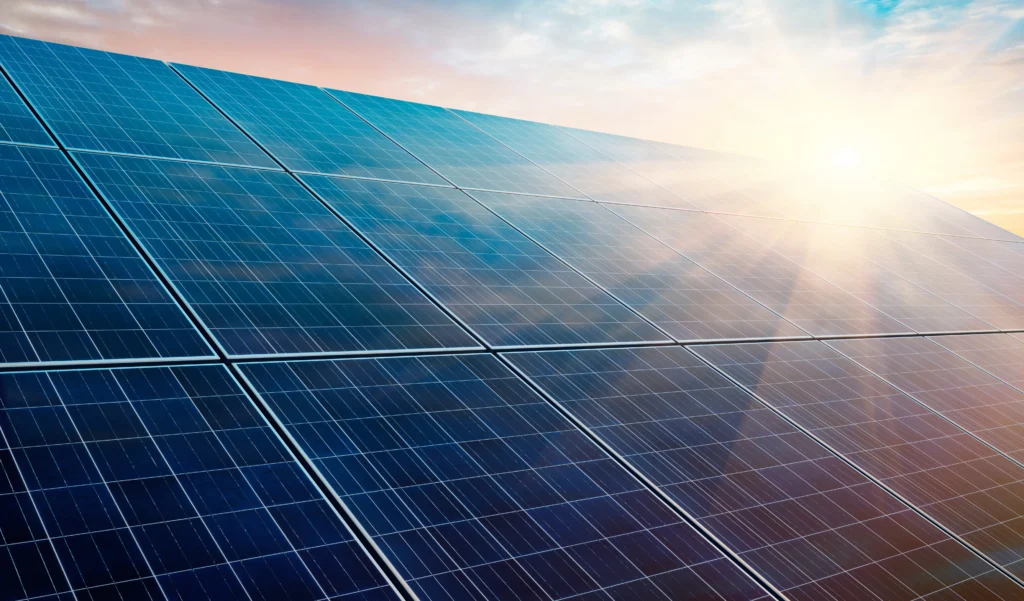Misinformation about what happens to solar photovoltaic (PV) modules at the end of lifetime is threatening to slow down solar project deployments. Every community is entitled to investigate concerns about environmental risks and safety hazards before consenting to new technology and unfamiliar infrastructure. To raise awareness about PV module technology, SEIA has assembled some of the most common misconceptions and addressed them head on with facts from unbiased research.

After reviewing this mythbuster fact sheet, you will be able to explain why PV module lifetime has increased substantially over the past 25 years, why many modules are considered nonhazardous and safe for disposal, why solar project owners cannot simply dodge their responsibilities when taking systems out of service, and why SEIA is confident that PV module recyclers can keep ahead of demand for their services for decades to come.
“Never before has a rapidly scaling industry prepared as diligently as the solar industry to repurpose and recycle equipment at the end of life, diverting a full range of materials away from the waste stream.”
Myth 1: PV modules are unreliable and get taken out of service prematurely.
Solar project financiers need to know if modules will continue to perform throughout their useful lifetime because the financier stands to lose money if equipment fails. In the 1990s, the useful life of a PV module ended at 15 years. Today, many financiers accept a 30- to 35-year useful lifetime. What changed? For many years, modules have undergone testing for accelerated degradation to measure performance through various real-world conditions including humidity, thermal cycling, ultraviolet (UV) exposure, and mechanical loads. To achieve the highest reliability standards, module manufacturers must independently verify that their products do not degrade or fail during standardized testing. Testing has helped pinpoint deficiencies and enable continuous improvement in new module designs. An extension of PV module lifetime is significant for several reasons. It means less material needing to be replaced and introduced into waste streams. It gives manufacturers confidence to offer long-term warranties. And it helps create opportunities for module reuse and refurbishment on the secondary market.
Myth 2: PV modules release toxins at end of life and degrade land.
Glass accounts for most of the mass in all PV modules on the commercial market. In modules made with crystalline silicon, other heavily used materials include aluminum, silicon refined from sand, and polymers for adhesion. Crystalline silicon modules contain less than 1 percent of copper, silver, and tin, and less than 0.1 percent of lead. Cadmium-telluride (CaTe) modules also use mostly glass followed by aluminum and polymers. CaTe modules contain less than 0.4 percent of copper, and less than 0.1 percent of tellurium and cadmium. In most cases, a strong encapsulant that keeps moisture and dust off the module’s semiconductor cells also prevents toxins from leaching out of the module and into the soil or the air. However, even when modules suffer damage, they contain such small amounts of toxic metals and release so few toxins during hazardous waste testing that they are considered non-hazardous and safe for disposal in a landfill.
Myth 3: PV projects have no obligation to properly dispose of modules at end of life.
Many public agencies at the federal, state, and local level have jurisdiction over permitting for solar projects, especially large-scale solar projects. Before issuing permits that authorize construction and subsequent operation, agencies routinely require project owners to create and maintain a decommissioning plan that spells out what will happen with solar equipment at the end of system lifetime. Generally comprehensive in scope, the decommissioning plan covers the dismantling and removal of equipment; rehabilitation of land and soil; monitoring the rehabilitation process to ensure compliance; waste management strategies to promote reuse, refurbishment, and recycling; upfront financing to pay decommissioning costs; and timelines to complete decommissioning. Capacity for module recycling was constrained for many years, but recyclers have begun offering a robust suite of services to various project stakeholders. SEIA National PV Recycling Program Partners now operate processing sites and collection sites in all major geographic regions of the US.
Myth 4: Solar industry growth will leave us with a growing pile of module waste in the future.
The US has an ongoing problem with waste piling up in landfills, but now and for decades to come there is little reason to believe that PV modules will challenge waste streams in any meaningful way. For context, municipal waste at its current growth trajectory will exceed 70 billion metric tons by 2050. Plastic waste will top 12 billion metric tons, and electronic waste will approach 2 billion metric tons. PV module waste is forecast by researchers at the National Renewable Energy Laboratory to fall somewhere between 54 million and 160 million metric tons. Meanwhile, the solar and energy storage industries have been proactive about establishing and expanding recycling capacity and improving processing technologies. Module recycling capacity in SEIA’s National PV Recycling Program currently exceeds the volume of decommissioned modules entering the waste stream. We fully expect that recyclers will continue to expand capacity and stay ahead of demand for recycling services.
References
- Lawrence Berkeley National Laboratory, “Benchmarking Utility-Scale PV Operational Expenses and Project Lifetimes: Results from a survey of U.S. Solar Industry Professionals,” June 1, 2020, https://escholarship.org/content/qt2pd8608q/qt2pd8608q.pdf
- National Renewable Energy Laboratory news, “Photovoltaic Toxicity and Waste Concerns Are Overblown, Slowing Decarbonization—NREL Researchers Are Setting the Record Straight,” Nov. 13, 2023, https://www.nrel.gov/news/program/2023/photovoltaic-toxicity-and-waste-concerns-are-overblown-slowing-decarbonization.html
- PLOS, “Circular Economy Priorities for Photovoltaics in the Energy Transition,” Sept. 9, 2022, https://journals.plos.org/plosone/article?id=10.1371/journal.pone.0274351
- SEIA Circular Economy webpage, accessed Dec. 20, 2024, https://seia.org/initiatives/circular-economy/
- SEIA PV Toxicity fact sheet, https://seia.org/wp-content/uploads/2025/06/PV-Toxicity-Factsheet_5-2025.pdf
- U.S. Environmental Protection Agency Solar Panel Frequent Questions, accessed Dec. 20, 2024, https://www.epa.gov/hw/solar-panel-frequent-questions
- U.S. Environmental Protection Agency Solar Panel Recycling webpage, accessed Dec. 20, 2024, https://www.epa.gov/hw/solar-panel-recycling
